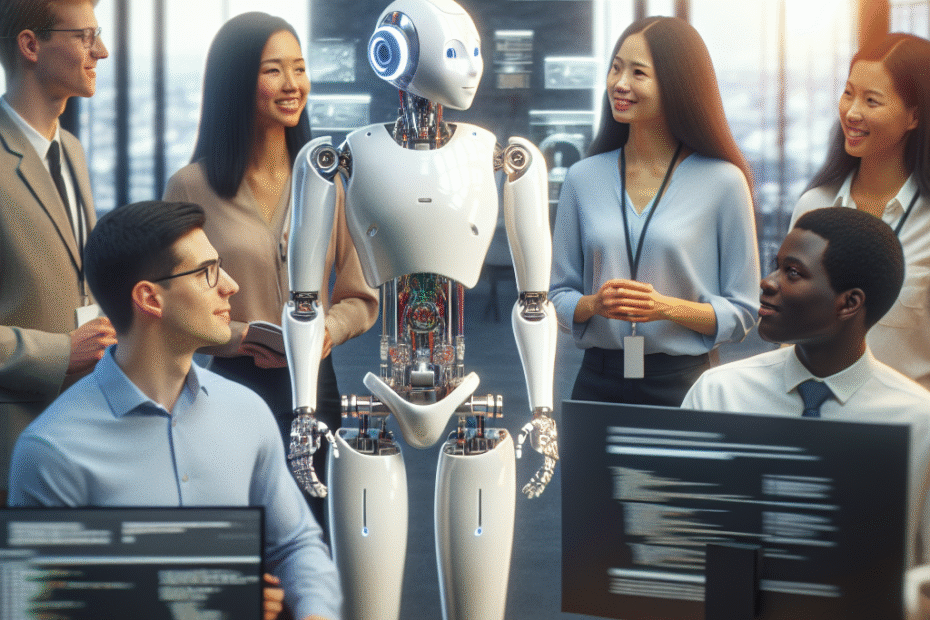As we approach the year 2025, the revolutionary impact of Artificial Intelligence (AI) is more pronounced than ever. This article delves into the transformative AI trends set to define our era, offering insights into how they will reshape industries and influence daily life.
Emerging AI Technologies and Their Implications
Emerging AI Technologies and Their Implications
- Machine Learning Algorithms: Machine learning algorithms continue to advance, enabling AI systems to learn from data and improve performance without being explicitly programmed. This technology has the potential to revolutionize various industries by providing valuable insights and predictions based on massive amounts of data.
- Neural Networks: Neural networks mimic the human brain’s structure, allowing AI systems to process complex data and recognize patterns with high accuracy. This technology is used in image and speech recognition, natural language processing, and autonomous vehicles, among other applications.
- Natural Language Processing: Natural language processing allows machines to understand and generate human language, enabling advancements in chatbots, language translation, sentiment analysis, and voice assistants. This technology enhances communication between humans and machines, improving user experiences across different sectors.
- Generative AI: Generative AI is a subset of machine learning that focuses on generating new data, such as images, music, and text. This technology has applications in art, entertainment, and design, allowing AI systems to create original content with human-like creativity.
- Reinforcement Learning: Reinforcement learning is a type of machine learning where an AI agent learns by interacting with its environment and receiving feedback in the form of rewards or punishments. This technology is employed in autonomous robots, game playing, and resource management, among other domains.
- Explainable AI: Explainable AI aims to make AI systems more transparent and interpretable by providing insights into their decision-making processes. This technology is crucial for building trust in AI systems and ensuring accountability in critical applications like healthcare diagnosis and financial forecasting.
These advanced AI technologies have far-reaching implications for various sectors, transforming how businesses operate and how society interacts with technology. From personalized healthcare treatments and predictive financial analytics to self-driving transportation systems and intelligent virtual assistants, the possibilities are endless with the continued evolution of AI in 2025.
Adapting to the AI-Driven Job Market
The job market in 2025 is undergoing a significant transformation due to the advancements in AI technology. As automation and machine learning become more prevalent, new job roles are emerging while existing professions are evolving. It is crucial for individuals to adapt their skills and embrace continuous learning to thrive in this AI-driven job market.
With AI taking over routine tasks, new job roles such as AI ethicists, data scientists, and machine learning engineers are in high demand. These roles require a deep understanding of AI technologies and the ability to analyze and interpret data effectively. AI is not replacing humans but augmenting their capabilities, leading to the need for human-AI collaboration in various industries.
For individuals looking to navigate the changing job market, it is essential to upskill and reskill to meet the demands of AI-driven roles. Embracing lifelong learning and gaining expertise in AI-related fields can open up new opportunities and ensure career growth. Online courses, workshops, and certifications in AI and data science are valuable resources to enhance skills and stay relevant in today’s job market.
Businesses must also adapt to the evolving job market by investing in employee training and development programs focused on AI technologies. Encouraging a culture of continuous learning and fostering collaboration between humans and AI systems can drive innovation and productivity within organizations. Leveraging AI tools for talent acquisition, workforce planning, and skills development can help businesses stay ahead in a competitive market.
In conclusion, the AI-driven job market in 2025 offers both challenges and opportunities for individuals and businesses. By embracing skills adaptation, continuous learning, and human-AI collaboration, individuals can thrive in new job roles created by AI, while businesses can stay competitive by investing in their workforce’s development. Embracing the potential of AI trends shaping our future is key to navigating the AI revolution successfully.
Conclusion
This article offers a compass for navigating the AI landscape of 2025, highlighting emerging technologies and the evolving job market. The future beckons with opportunities for those prepared to embrace and adapt to the AI revolution, securing a competitive edge in the ever-changing digital world.

Love the strategy breakdown-it really highlights how games like Super PH blend luck with smart play, especially with features like wilds and free spins. Great read!